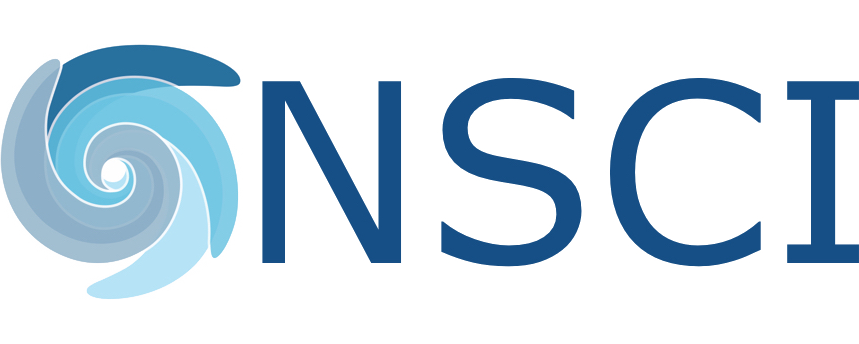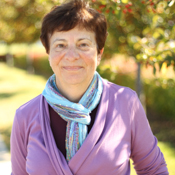Anne Messer, Ph.D.
Anne Messer received her Ph.D. in Molecular Biology from the University of Oregon, Institute of Molecular Biology, studying the genetics of membrane permeation in E. coli. She made the transition to neurogenetics as a Helen Hay Whitney postdoctoral fellow with Dr. Richard Sidman, Harvard Medical School. Although her major project was with cerebellar development mutants of mice, there was also an active program in retinal disease mutants, with many parallels and interests. During her tenure as an independent neurogenetics research scientist at the Wadsworth Center of the NY State Department of Health, she directed the Molecular Genetics Program and the Laboratory of Human Genetics. Thereafter, she joined the University at Albany as a professor of Biomedical Sciences and became the founding chair of the neuroscience track. Dr. Messer has published over 100 papers on genetics, mechanisms, therapeutics for neurodevelopmental and neurodegenerative diseases, including papers in Nature, Nature Genetics, Proceedings of the National Academy of Sciences, Molecular Therapy, and major neuroscience journals. She has been funded by multiple NIH grants and several foundations while reviewing grants for over 25 NIH study sections, and 12 national and international funding agencies. In the late 1990s, she pioneered the use of engineered antibody fragments (nanobodies and intrabodies) to counteract the cellular effects of misfolded proteins in stressed and aging cells. Since then, she has amassed a body of publications applying this technology to Huntington’s and Parkinson’s disease, ranging from antibody engineering and nanobody selection to in vivo delivery by novel gene therapies. There are many commonalities between the neurodegenerative diseases that have been her primary focus and the breakdown of cellular function in Age-related Macular Degeneration. Dr. Messer recently moved her most relevant technology and extensive expertise to NSCI, to bring this powerful approach to the exciting stem cell work being done by her long-term colleagues, Drs. Sally Temple and Jeff Stern.
Dr. Messer’s major contributions to neurological disease treatments:
Intracellular misfolding and abnormal accumulation of a neuronal protein are the triggering events in many neurodegenerative diseases including Huntington’s disease and Parkinson’s disease. The kinetics of misfolding can be altered by changing the protein context of the initiating peptides in these proteins. The cancer field has a large antibody engineering community that has developed technologies to recognize and target critical antigens with antibody fragments that utilize the binding specificity of the variable (Fv) antibody domains. Dr. Messer pioneered adapting this technology to target the expanded polyglutamine (polyQ) region of mutant huntington (mHTT) intracellularly, which opened up the entire field of antibody engineering for neurodegenerative diseases.
- Lecerf, J.M., T.L. Shirley, Q. Zhu, A. Kazantsev, P. Amersdorfer, D.E. Housman, A. Messer, and J.S. Huston (2001) Human single- chain Fv intrabodies counteract in situ huntingtin aggregation in cellular models of Huntington’s Disease. Proc Natl Acad Sci USA 98, 4764-4769.
- Miller T.W., C. Zhou, S. Gines, M.E. MacDonald, N.D. Mazarakis, G.P. Bates, J.S. Huston and A. Messer (2005) A human single-chain Fv intrabody preferentially targets amino-terminal huntingtin fragments in striatal models of Huntington’s Disease. Neurobiol Dis 19, 47-56.
- Wolfgang W, T. Miller, J.M. Webster, J. Huston, L. Thompson, J.L. Marsh and A. Messer (2005) Suppression of Huntington’s Disease pathology in Drosophila by intracellular antibodies. Proc Natl Acad Sci USA 102, 11563-11568.
- Snyder-Keller, A., McLear, JA, Hathorn, T, Messer, A. (2010) Early or late-stage anti-N-terminal huntingtin intrabody gene therapy reduces pathological features in B6.HDR6/1 mice, J Neuropathol Exp Neurol. 69, 1078-85.
Dr. Messer applied her expertise from the Huntington’s disease project to a series of other projects including engineering antibody fragments as intrabodies against α-Syn, a protein that is critical to the onset of Parkinson’s disease. In her work, antibodies targeted to the C-terminal region of disease-causing misfolded and accumulating α-Syn protein have shown some protective properties. This paved the way for establishing lead compounds for preclinical testing, demonstrating the value of the approach she developed.
- Zhou, C., S. Emadi, M.R. Sierks and Messer (2004) A human anti-alpha-synuclein intrabody blocks aberrant cellular effects of overexpressed alpha-synuclein. Mol Therapy 10, 1023-1031.
- Lynch, S.M., C. Zhou and Messer (2008) An scFv intrabody against the nonamyloid component of alpha-synuclein reduces intracellular aggregation and toxicity, J Mol Biol 377, 136-147.
- Messer A, Joshi SN, Intrabodies as Neuroprotective Therapeutics. (2013) Neurotherapeutics. Jul;10(3):447-58.
Dr. Messer continued her work tackling two major challenges to the use of antibody fragments as intracellular aptamer reagents. The challenges include the difficulty of correct folding of the therapeutic fragments in the cytoplasm and the long-term accumulation of disease proteins that misfold during the time when the complex is dissociated. Applying her approach of manipulating the folding kinetics, increased solubility was achieved by increasing the negative charge on the proteins. Fusion of intrabody/ nanobody constructs to the negatively-charged proteasome targeting degron PEST both increased solubility and enhanced clearance of the target protein during the time that the complex was bound. These advances will facilitate in vivo use of this novel class of reagent for a range of neurological disorders.
- Kvam, E., Sierks, M.R, Shoemaker, C.B, Messer, A. (2010) Physico-chemical determinants of soluble intrabody expression in mammalian cell cytoplasm. Protein Eng Des Sel. 6:489-98.
- Butler, D.C and Messer, A (2011) Bifunctional anti-Huntingtin Proteasome-Directed Intrabodies Mediate Efficient Degradation of Mutant. PLoS One. 2011;6(12):e29199.
- Joshi, SN, David C. Butler, DC, Messer, A (2012) Fusion to a highly charged proteasomal retargeting sequence increases soluble cytoplasmic expression and efficacy of diverse anti-synuclein intrabodies. mAbs 4, 686-693.
- Butler, DC, Joshi, SN, De Genst, E, Baghel, AS, Dobson, CM, and Messer, A. (2016) Bifunctional Anti-Non-Amyloid Component α-Synuclein Nanobodies Are Protective In Situ. PLoS One. 2016 Nov 8;11(11):e0165964
- Chatterjee, D, Bhatt, M, Butler, D, De Genst, E, Dobson, CM, Messer, A and Kordower, JH (2018) Proteasome-targeted nanobodies alleviate pathology and functional decline in an α-synuclein-based Parkinson’s disease model. npj Parkinson’s Disease 4, Article number: 25
Contributing to human gene therapy clinical trials has been a long-term goal of Dr. Messer’s research. This led her to become the scientific advisor for Hannah’s Hope Fund. After 8 years of preclinical studies, a clinical trial, “Intrathecal Administration of scAAV9/JeT-GAN for the Treatment of Giant Axonal Neuropathy” was started in 2015. A collaborative study of immunomodulation in non-human primates allowed the addition of null patients to the trial, which had previously excluded individuals most likely to have an immune response to the transgene. Experience with this project will be invaluable in bringing the intrabody gene therapy studies to the clinic.
- Ramsingh AI, Gray SJ, Reilly A, Koday M, Bratt D, Koday MT, Murnane R, Smedley J, Hu Y, Messer A, and Fuller, DH. (2018) Sustained AAV9-mediated expression of a non-self protein in the CNS of non-human primates after immunomodulation. PLoS One. 2018 Jun 6;13(6):e0198154. doi: 10.1371/journal.pone.0198154. eCollection 2018.

